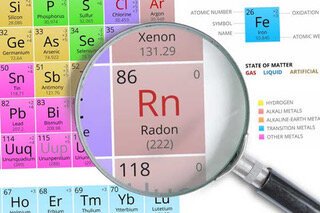
Radon Testing
Radon: What is it?
You might find it interesting to know that Radon is not a new discovery. Radon is a gaseous highly radioactive element discovered by English physicist Ernest Rutherford in 1899 and Friedrich Ernst Dorn, a German chemist, in 1900. Elevated levels of radon in homes were not recognized as a potential public health threat until the mid-1980’s.
Radon is a colorless chemically unreactive inert gas.
It is a single atom gas, unlike oxygen, O2, which is comprised of two atoms. Because of its one atom structure it easily penetrates many common materials like paper, leather, most paints, and building materials like sheetrock, concrete block, mortar, tar paper, wood paneling and most insulations.
Radon occurs naturally and comes from the natural breakdown of uranium. It is usually found in igneous rock (solidified from lava) and soil, but in some cases, well water can also be a source of radon.
Exposure
The primary routes of potential human exposure to radon are inhalation and ingestion.
Radon escapes from the soil, into the air and into building and homes. The majority (69%) of radon that effects humans comes from the soil. 18.5% comes from well water, 2.5.% comes from building materials and 9.2% comes from outdoor air. Exposure to high levels of radon increases the possibility of lung cancer.
Recommendations
The EPA recommends corrective action when indoor level of radon reaches 4Ci/L.
How do you know?
Testing it the only way to know your home’s radon level. There are no immediate symptoms that will alert you to the presence of radon. The US EPA, Surgeon General, American Lung Association, and the National Safety Council recommend testing your home for radon because testing is the only way to know your homes radon levels.
Crawlspaces with no VDR (Vapor Barrier) and no positive ventilation could be exposing you to high levels of radon.

